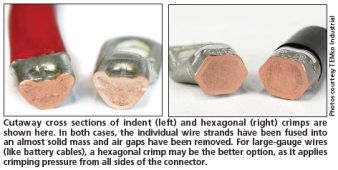FilterGuy
Solar Engineering Consultant - EG4 and Consumers
Does anyone know a good test to ensure a crimping process is creating a good cold-weld? I have always used a crimper and just assumed I was getting a good crimp. I have also cut a few crimps in half to check that it looks like solid copper. However, is that sufficient? Is there something else that can be done to verify a cold weld was achieved?
I am working on some stuff right now that uses some non-standard crimping and I am wondering if there is a good way to verify the process? (Destructive testing is OK).
I am working on some stuff right now that uses some non-standard crimping and I am wondering if there is a good way to verify the process? (Destructive testing is OK).




